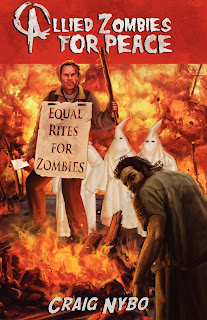How to Finish Your First Novel
Many new fiction authors view writing the great and mighty novel as an almost insurmountable task. There is no mystery to completing long form fiction; it takes elbow grease, patience, and perseverance. It also takes an organized plot structure on which to hang your prose.
Long form work goes uncompleted most often due to one of two obstacles: 1) The author simply gets lazy and lets the story go cold; 2) The author writes herself into a corner and, not knowing how to get out, gives up on her story altogether. I can’t help you with obstacle 1. Setting aside a consistent writing schedule and following through is up to you.
But I might just have the ladder you need to get over obstacle 2. To successfully put the satisfying words “the end” at the conclusion of your 80,000 to 110,000-word story, you must insert plot points in all the right places in advance before writing your copy.
Your assignment
It can be simple to complete a plot map, much like filling out a blank form. To step out a simple plot, as an exercise, write a few paragraphs for each of the chronologically ordered plot points defined below. This first phase outline should not turn into a novel itself. Keep it brief. Who knows, at the end of the exercise, you might have a great story on your hands.
Here we go:
Act 1
Hook –What are you going to write in the first 3,000 words to trap your readers into your story’s world.
Cast the dye – Your protagonist must do or fall victim to something early in your story that causes her to act. Once the dye is cast, it can’t be uncast. There can be no turning back for your protagonist.
Game Changer – This plot point is like a big bear trap. Throughout act 1, you should draw your character closer and closer to this trap. At the end of act 1, SNAP, the trap goes off and your protagonist is caught. Your protagonist must spend the rest of the story working his way out of this trap. The game changer marks the end of act 1.
Act 2
Pinch – At these plot points, you must put your protagonist at a crossroads and force her to make a decision on which way to go. Any road from this intersection must have its own set of conflict and consequences. You must insert at least 1 pinch in act 2. You may put up to 2 additional pinches, but moderation is the key. Each pinch has consequences. These conflict sequences must be resolved and it takes time to do so. Too many pinches in act 2 might mean too much time making critical decisions for your protagonist and not enough time resolving the consequences of those decisions.
Disaster – This plot point concludes act 2. The disaster marks the point in your story where life is at its worst for your protagonist. Throw everything you can think of at your main character at this point. Give him a broken leg, a bloody nose, and make him crawl. The lower your protagonist descends during the disaster, the more gratifying the ending of your story becomes.
Act 3
Showdown – This plot segment includes the path your protagonist must take to recover from the effects of your story’s disaster. The showdown can take place over several scenes or in a single scene. Lining out your story’s showdown with a few paragraphs might be the most important ladder rung to move you towards finishing your story.
Resolution – How does your story end? How has your protagonist changed from the moment the dye was cast in act 1? Be certain that your story’s resolution satisfies your readers. The resolution must comply with your story’s rules. Readers must be able to put your novel down and, like it or not, accept that your story’s ending is correct.
Rather than rolling up your sleeves and diving headlong into chapter 1 of your story, spend a couple of hours stepping out your novel by putting down few paragraphs for each of the above plot points. Not only will this practice lay down a roadmap for you to follow, it will force you to think through your story, to baton down the loose ends, to clarify your conflict, and to define your main characters’ attributes.
With a clear roadmap and a well thought through story line, you will find that, with a consistent writing schedule, you will at long last type those satisfying words at the end of your novel: “the end.”
by Craig Naibo
Paperback: 336 pages
Publisher: Nybo Media LLC. (October 1, 2012)
About the book:
Zombies vs. the KKK: The darkest hour in undead civil rights history. Allied Zombies for Peace covers the violent 42-minute time period that took place on November 11th, 1968, known as the Veterans Day Parade Massacre. This report outlines, according to eyewitnesses, the events that mark that day as a black stain on undead civil rights history. Violence explodes when a shot is fired during the 1968 Veterans Day Parade in Columbus, Ohio. Not knowing who pulled the trigger, rivaling factions, The Allied Zombies for Peace and The Ku Klux Klan, turn on each other in a vicious flurry of urban combat. Other groups join the fight, including the Vietnam War veterans, a peace-loving group of hippies who call themselves the New Revolutionaries for Peace and Love, and veterans of World War I.









0 comments:
Post a Comment